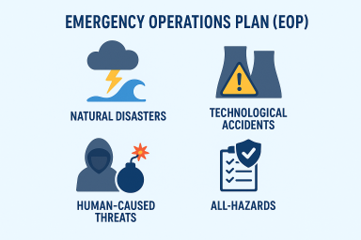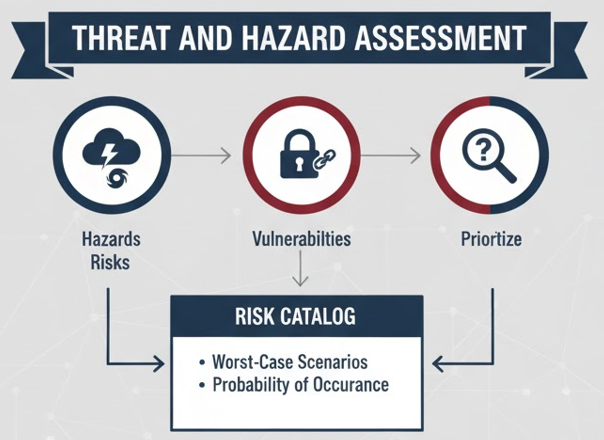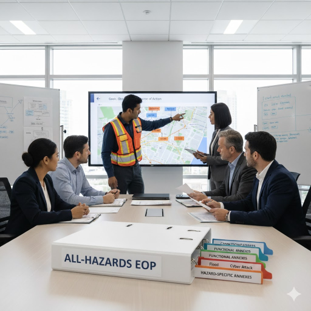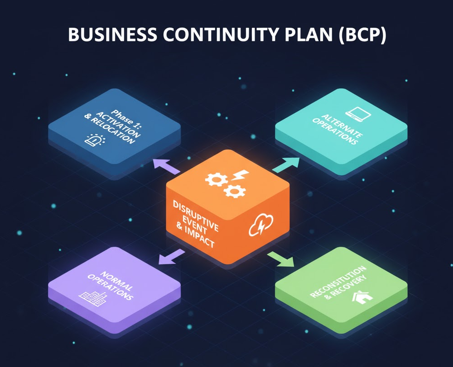Emergency Management And Continuity Planning
Emergency Management and Continuity Planning
As one of the foundational elements of any Emergency Management program, IMS implements a comprehensive, multi-faceted approach to emergency planning. Our plans are carefully constructed to be practical, compliant, and operationally effective based on the needs of your organization. Our staff, with decades of experience, guide planning efforts, designing, developing, and implementing a wide range of emergency-related plans.
Emergency Operations Plan (EOP)
Emergency Operations Plans (EOPs) can be categorized by the hazard type they address (e.g., natural disasters, technological accidents, human-caused threats) or by the functional area (e.g., communications, mass care, health and medical services, evacuation, or continuity of operations). Many organizations use an all-hazards EOP with specific functional and hazard-specific annexes. Our plans are customized all-hazard documents that outline the policies, procedures, and responsibilities of an organization in the event of an emergency or disaster.
A systematic risk assessment process is conducted that identifies, assesses, and prioritizes potential hazards and vulnerabilities to inform effective preparedness and response strategies. In this process, risks are cataloged to determine realistic worst-case scenarios and probabilities of occurrence. Community or organizational areas that may be impacted are identified, and the levels of impact quantified, to determine areas of greatest vulnerability. This is important to prioritize allocation of mitigation and preparedness resources. Tools used include Hazard Vulnerability Assessment (HVA), Threat and Hazard Identification and Risk Assessment (THIRA), and Stakeholder Preparedness Review (SPR).
Threat and Hazard Assessment
Emergency Operations Plan Annexes
Emergency Operations Plan (EOP) annexes detail specific protocols and procedures for managing various functions or hazards. Functional Annexes outline standardized actions like evacuation, communications, or mass care, applicable across different emergencies. Hazard-Specific Annexes address unique threats such as floods, wildfires, or specific technological failures, guiding tailored responses for those incidents. They are used to supplement the core EOP with actionable, detailed plans. Annexes are a critical part of an all-hazard EOP because they outline the goals, objectives, and courses of action to be taken under specific circumstances.
Hazard Mitigation Plan
A Hazard Mitigation Plan (HMP) is a proactive, long-term strategy developed by communities to reduce or eliminate the risk to life and property from future disaster events, aiming to break the costly cycle of repetitive damage and reconstruction. The plan is built upon a thorough risk assessment that identifies local hazards and vulnerabilities, which then informs a comprehensive mitigation strategy of goals and prioritized actions. Maintaining a FEMA-approved HMP is crucial, as it qualifies a jurisdiction for various federal hazard mitigation grants, making it an essential roadmap for building a more resilient and sustainable community.
Continuity of Operations Plan (COOP)
A Continuity of Operations Plan (COOP) is a written plan designed to ensure an organization can continue to perform its essential functions and services during and immediately following a wide range of disruptive events, such as natural disasters, technological failures, or other emergencies. The plan typically identifies and prioritizes these critical functions, establishes orders of succession and delegations of authority for leadership, outlines communication protocols, and specifies the resources needed to continue operations at an alternate facility or via telework for a period of up to 30 days. By proactively preparing procedures, resources, and personnel, a COOP minimizes the impact of a disruption, protects essential assets, and allows for an orderly recovery and return to normal operations.
Business Continuity Plan
A Business Continuity Plan (BCP) is a comprehensive, strategic framework that outlines the proactive and reactive procedures necessary for a private sector organization to maintain or swiftly resume its mission-critical business functions following any major operational disruption, from a natural disaster to a cyberattack. The BCP is developed based on a Business Impact Analysis (BIA) to identify recovery objectives, and it encompasses all aspects of the business—including personnel, technology (often containing a Disaster Recovery Plan subset), facilities, and supply chains—to ensure the viability of the enterprise, minimize financial losses, and protect its reputation and customer base.
Other Services
In addition to the detailed services already described, IMS can provide a broad range of other services through access to a pool of subject matter experts that have specific experience. Examples include, but are not limited to: Infection Prevention, Regulatory Compliance, Security Assessments, Technical Writing, etc.
Planning
The development of strategies and procedures to effectively prepare for, respond to, and recover from disasters or crises, ensuring the safety of people, property, and operations.
Training
Provides individuals and organizations with the knowledge and skills necessary to effectively respond to crises, implement emergency plans, and ensure coordination during disasters or emergencies
Leadership
Guiding and coordinating teams during crises, making critical decisions under pressure, and ensuring effective communication and resource allocation to minimize impact and facilitate recovery
Drills & Exercises
Exercises simulate real-world disaster scenarios to test and refine response plans, enhance coordination among teams, and improve decision-making and communication under pressure
Already In A Crisis?
Need An Emergency Plan, Services, or Plan of Correction Right Away?






